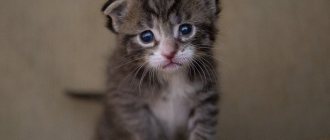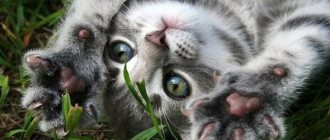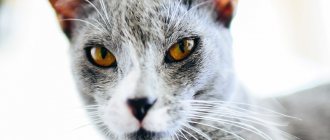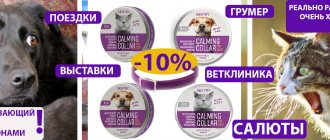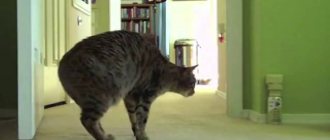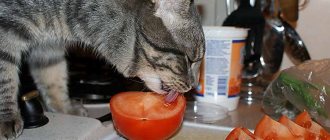Feeding homeless dogs, cats, and birds is possible and necessary.
Let's start by dispelling the authority of the opinions of people who claim that they are dog handlers and therefore their opinion about the dangers of feeding stray animals is authoritative and scientifically substantiated.
Only a few purported dog handlers speak about the dangers of feeding stray animals, and their involvement in this profession is often questionable.
A dog trainer is a specialist in the breeding (selection) and training of dogs and is not a specialist in the field of behavioral factors of homeless animals.
Zoologists specializing in Ethology and Animal Psychology study the influence of internal and external factors on the behavior of animals, and their opinion on feeding stray animals is exactly the opposite.
Let us also dispel several common myths about the dangers of feeding stray dogs and cats.
Myth one.
“Because they feed stray dogs and cats, mice and rats are breeding.”
Such a statement in itself, especially from a dog handler with extensive experience, casts doubt on his qualifications - even children know that cats are the main enemies of mice and rats.
And stray dogs not only hunt rats and mice, but also prevent their free migration through the streets.
And not a single mouse, much less a rat, will go to the feeder of a dog or cat.
Myth two.
“If homeless animals are deprived of food supply in cities, their numbers will decrease.”
So-called real animal rights activists constantly take similar initiatives to deprive homeless animals of food, and impose fines on people who feed animals.
In other words, such “real animal defenders” consider it normal to simply starve homeless animals.
However, this cruel initiative of theirs makes no sense in urban conditions and will not in any way affect the number of stray animals.
Because it is impossible to block access to food in cities, but even if it works, it will force dogs to first obtain food by hunting.
In essence, “zoorealists” are trying to turn stray dogs, but relatively socialized animals, into wild ones.
Which will be forced to unite in packs and obtain food for themselves through violence, both against other animals and people.
Myth three
“Due to feeding stray dogs, they unite in packs and become aggressive, as they guard the feeding area, considering it their territory.”
This kind of fantasy is comparable to the first myth, that mice get into cats’ dishes and breed terribly.
The reasons for the aggressive behavior of stray dogs, although these are isolated manifestations, are due to fear of humans and the threat posed by them.
Why feed stray cats?
Everywhere there are compassionate people who cannot indifferently pass by feral cats living near entrances and on the streets. At best, they bring them food in plastic trays, at worst...
Let's discuss the current problem. Should stray cats be fed? Are trays of sour soup a manifestation of humanism towards these animals?
These questions did not arise by chance. Our readers contacted BP with a request: “In the courtyard of an apartment building in the Zhukovsky microdistrict, one grandmother feeds stray cats, and some residents do not like this. Please conduct a survey to find out the opinion of the townspeople.”
We could not ignore this appeal, because in fact, many good people in different parts of our big country are faced with a similar problem. Conducted a survey on the BP pages on the Instagram social network
. As always, our readers began to actively discuss another topical topic. Of course, there were different statements - both for and against. Some people consider cats to be our friends and even our smaller brothers. Some people, for example, avid dog lovers, do not see any benefit from them.
BP asked experts for their opinion on this issue
Veterinary clinic paramedic Marina Ibragimova commented:
– Caring for animals is voluntary! If there are hungry cats and people want to feed them, that's great! The entrance is warm and more or less safe for them. But for many residents, the presence of cats in the entrance can be annoying, because there will still be a smell. The likelihood of diseases occurring in domestic cats increases. Infection or fleas can be carried on shoes. Therefore, if you are going to feed stray cats at the entrance, you must have the consent of all residents of the house, and also treat the animals against fleas, worms and vaccinate them once a year.
They also need to be sterilized so that the cats do not mark the territory and there is no need to house the kittens or get rid of them. By the way, now there is a promotion for low-income groups of citizens: pensioners, large families and disabled people - preferential sterilization of animals. The operation can be performed in our clinic “Zoovetcenter” on Shlakova Street, building 33. All you need is copies of documents and an appointment in advance. Telephone 3-44-10
,
8(950) 625-67-50
. Cats are not dangerous for people; they cannot infect them with terrible diseases. If we only deprive it, but it can be easily treated. Vaccination will protect against rabies.
Managing Director Inna Lysova:
– Mostly compassionate residents of our sponsored houses feed the cats near the entrances. Conflicts in such situations arose, but then everything was resolved by itself. Now we have more problems with stray and aggressive dogs. Recently they attacked people. We contacted various authorities asking for help. The matter was brought under control. They promised that the capture of these dogs would begin soon, and they would then be sent to specialized shelters.
The situation that we are vigorously discussing on social networks has developed in Vyksa, but here is how the problem is being solved in other cities. Our columnist Aigul Izmailova visited Crimea. She learned that about 100 (!) cats now live on the territory of the cultural heritage of Chersonesos. Two grandmothers have been feeding, sterilizing, treating and, accordingly, burying them at their own expense for 14 years. Local residents support them, help them (buy food and transfer money for treatment). It turns out that in cultural cities, feeding stray cats is the norm.
Of course, whether to do good deeds or not is the choice of each person. But the editors of BP are always for good... We agree with Exupery: “We are responsible for those we have tamed”!
Population is growing
Today there are more than 20 thousand stray cats in St. Petersburg. They are trying to control the number. For example, in 2022, tailed animals were included in a free sterilization program. Only the project does not involve catching. “This is a pilot contract, a trial one. To see what we will encounter during the work. Therefore, the volume is small,” explains Elena Mezentseva, deputy general director of the veterinary hospital. “Hunting” for four-legged animals is still left to compassionate citizens. And this really slows down the process. Before being taken to a homeless animal shelter, cats undergo a full examination. The four-legged animals receive all necessary vaccinations. The procedures are not cheap - the average Murka or Barsik costs 20 thousand rubles. In the fall, tailed animals begin to be brought here en masse from the streets, from the basements of houses; there is absolutely not enough space. “It’s almost impossible to surrender an animal; no one is waiting for you with open arms. The shelters are overcrowded,” explains Olga Titovich, a representative of the institution.
What herbs do cats like most?
List of useful plants (except for cases of individual intolerance):
- Catnip (catnip). Probably the most favorite plant for cats. It has a calming effect on them, although in the first 10 minutes after eating, pets may show increased activity. Catnip phytohormones act on them as happiness hormones and pheromones. But not all cats react violently to this mint, although in any case it will only bring benefits.
- Thyme (thyme). It has a calming effect, like catnip. But if you decide to grow thyme, it is better to plant several bushes at once, because it takes a very long time to grow.
- Valerian. This herb is known for helping people calm down and get a good night's sleep. But for cats it works as a stimulant - it makes even fat and lazy cats hyperactive. Cats will definitely dig up the roots of valerian if it grows in your garden.
- Lavender. It has a sedative effect not only on us, but also on cats. Safe for animals.
- Chamomile. As a tincture or decoction, when applied to the skin, it soothes itching. May also reduce inflammation.
- Wheat, oats and barley. They contain a large amount of vitamins and microelements (potassium, magnesium, phosphorus), as well as folic acid. With the help of these herbs, the stomach is well cleansed from lumps of swallowed hair. If your cat does not have the opportunity to eat grass in its natural environment, for example in winter, you can grow it on the windowsill in a few days. Pet stores always have suitable sets of seeds in their assortment.
- Peppermint and lemon balm. Cats love almost all types of mint and lemon balm, but they should not get too carried away with eating these plants. Everything is good in moderation, but overeating may cause stomach upset.
- Parsley. Rich in potassium and vitamins, in particular A, B and C. If your pet willingly eats it, do not deny him the pleasure.
- Carrot tops. Cats love soft and juicy greens, especially if their diet lacks essential vitamins.
- Marigold. Not only are they safe for cats, but they are also natural repellents, repelling harmful insects with their scent. Due to their lutein content, their extract is found in many medicated foods, such as Royal Canin Veterinary Diets.
- Budra ivy (dog mint). For cats, this is also a source of phytohormones. It acts similarly to catnip and valerian.
- Evening primrose. It is a source of healthy unsaturated fatty acids.
Cats vomit a little after eating non-poisonous plants, so they can cleanse their stomachs with the help of grass, there is no need to be afraid of this.
“Tailtails” specifically eat tough grass to remove fur from the gastrointestinal tract by regurgitation. Of course, they have no idea that they are doing this precisely because of the accumulated hairballs. In fact, they first start to feel sick, and then they think about what kind of hard food they can eat to induce vomiting.
Vomiting works as a protective mechanism to remove a foreign object located in the gastrointestinal tract.
And this happens not only because of hairballs, but also because of eating any food or objects that cause discomfort, as well as against the background of any disease. And as a hard object, essentially working like a brush for cleaning, the cat can choose not only grass, but anything: wires, threads, Christmas tree tinsel, and any other small inedible objects. Therefore, it is recommended to grow healthy cat grass (such as wheat, oats or barley) so that your furbaby always has access to it.
Unfortunately, there are many more dangerous plants. Of course, not all pets show interest in them. As a rule, street cats are more selective and do not eat everything. But if your pet rarely goes outside, when going out into nature, he can try literally anything.
History of the barn cat
The hypothesis of universal kinship is not an allegory at all. Geneticists conducted a study of 797 animals and found that they descend from at least 5 common ancestors on the maternal line. Among the test subjects were both purebred and barn cats. So a homely mongrel and a tribal aristocrat Persian are not so far from each other.
It has been scientifically proven that the founder of the genus was a wild steppe cat. It still lives in the space from the Far East to North Africa, confirming the powerful natural immunity and ability of the genus to survive. After this, is it any wonder why a yard cat adapts to any living conditions?
Archaeologists claim that next to humans, these animals appeared somewhere in the Fertile Crescent region (on the modern map, an arc from Turkey to Libya). At this time, people began to master agriculture, food supplies attracted rodents, and cats followed them. This is how the first wave of migration of these animals occurred and no one needs to be convinced that they were all outbreds.
After 2.5-3 thousand years, cats spread to North Africa and Europe. The active stage of domestication of these useful animals has begun. But until now, people have not completely tamed their wayward cats.
How to distinguish a purebred cat from a mongrel animal
At first glance, the differences lie on the surface. If a cat has reddish short hair, a characteristic color-point color and bright blue eyes, then no one doubts that this is a purebred Siamese. But brown pupils, a sixth toe or an overly large mask instantly exclude this aristocrat from the purebred group.
Which animals fall under the definition of outbred:
- In the first place is the culling of breeding animals. It includes all individuals that are not suitable for breeding and exhibition. Such cats cannot be called outbred, but they are also not considered to be among the elite cohort.
- Next come the mixed breeds - the owners did not keep track of the walking cat, but she delighted them with mixed offspring. The appearance may be impeccable, a fake pedigree can deceive an expert, but as soon as it comes to kittens, everything immediately falls into place. Mestizos do not guarantee quality children.
- The final group is ordinary outbred cats, at first glance one can immediately identify 10 generations of street strays. They come in all sizes, coat types and colors.
The listed animals belong to the group of domus - good companions for their owners, but without certain characteristics of the breed or with its unconfirmed characteristics.
It happens that outbred cats and their elite brothers can only be recognized by expert felinologists. An example of such camouflage is the rare Arabian Mau breed. In its white and red color variants, it is simply impossible to distinguish it from an ordinary village cat.
Feeding mongrel cats
Feeding a mongrel street dweller can be a bit of a hassle. There are fewer problems with babies, but if a cat has managed to live in freedom and is accustomed to picking up food from the ground, it is almost impossible to re-educate it.
- At an early age, babies are given diluted goat's milk or special infant formula. Outbred kittens separated from their mother prematurely have not yet learned to eat and will require additional attention.
- For adolescents, the diet is increased by boiled minced meat in a liquid consistency or age-appropriate industrial food.
- Closer to six months, meat, fish, dairy products, vegetables and fruits are introduced into the cat’s menu.
- It is necessary to provide feed yeast and vitamin and mineral supplements. No matter how strong the natural immunity of a purebred cat may be, its support is mandatory.
- There must be water next to the food. The animal's access to it is left free around the clock.
Find out also: “What to feed kittens of different ages.”
Choosing cookware is not a difficult task. Plastic bowls are convenient and inexpensive, but their porous structure traps microscopic food debris. Therefore, it is necessary to thoroughly wash surfaces to prevent the growth of bacteria.
Those with large mustaches are the most picky about dishes. If they cling to the sides of the bowl, the cat begins to experience discomfort.
Appearance of outbred cats
Classification of outbred cats is carried out in standard ways: by weight and size, by coat length, by color.
By weight and size:
- large (over 7 kg);
- medium (4-7 kg);
- small (up to 4 kg).
Additionally, the height and length of a mongrel cat are considered. Sometimes the weight of the animal does not reach the required values due to its light bones, but its body is long and has high legs. Such cats are included in the first group. The same applies to small ones, when small height is compensated by significant weight.
Wool length:
- long-haired;
- semi-longhaired;
- shorthaired
The type of hair in cats is determined by a set of specific genes passed on to them from their parents: the L- allele is an attribute of short hair, and ll characterizes the preference for long and semi-long hair. Depending on the genetic pedigree of mongrel cats, long-haired parents may produce short-haired children.
In color, the genotype also comes first. It is impossible to guess the color of the offspring of outbred cats in advance, and no one sets such a task. The colors of street tramps offer a wide choice for every taste - from pure white to tiger mixed with tortoiseshell.
Is there a street breed?
The division based on appearance happened much later:
- The history of breeds begins in 1000. Around this time, the first mentions of the Norwegian forest cat date back to this time. She is also considered the ancestor of the Siberian longhaired population.
- Later, Siamese, Abyssinians, Egyptian Mau, Persians and Turkish Angora were identified. Even the names clearly show the region from which they all migrated to Europe.
- 1758 Swedish naturalist Carl Linnaeus introduced the concept of Felis catus, a binomial name for the species.
- 17 years later (1775), his colleague from Germany von Schreber supplemented this section with the name Felis silvestris, identifying wild cats as a separate group.
- 1871 The first official cat show took place in London - 170 animals were shown in 25 categories.
From that moment on, the cat world was divided into purebred purebreds and simple street cats.
No one would dare to claim that outbred cats have any characteristic features. The point is not only in their diversity, but also in their amazing adaptability. Even formerly pampered pets quickly adapt to the street.
They have offspring with any homeless partner and thereby replenish the population of outbred animals.
There is a street breed of cats: they are counted not on the basis of size, build and color, but on the basis of the “cat’s soul.” Some of them value freedom much more than close communication with people.
Pros and cons of outbred cats
Advantages and disadvantages of purchasing an ordinary, outbred kitten.
| pros | Minuses |
| Low cost or free | It is impossible to make money from breeding and selling kittens |
| Good immunity and health | Not allowed to participate in exhibitions |
| Possibility to choose appearance | |
| No problems in content | |
| No special feeding requirements |
Inviting a purebred cat into your home is a noble act that will be impossible to beat in the future. Because true nobility can only be with a plus sign!



